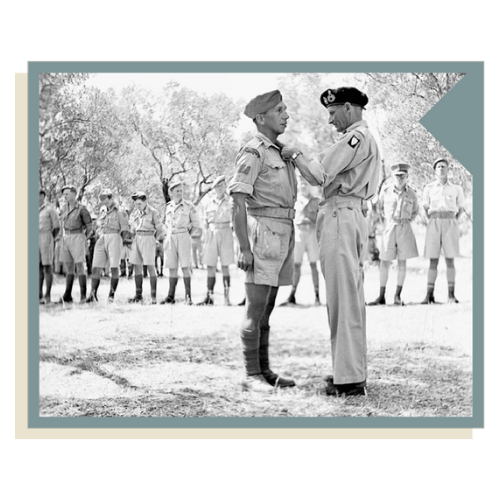During World War II, ordinary Canadians achieved extraordinary things by demonstrating incredible acts of courage and bravery under unimaginable circumstances. Who were these Canadian men and women who went above and beyond to fight fascism?
Students will research and create playing cards about WWII heroes and heroines. Students will then play the card game Which WWII Hero Am I?
First, students will research 4-6 WWII heroes and heroines and use their research to create playing cards. Students can use the card template below or create their own playing card.
Students then have 2 options for competitive game play to learn more about the heroes and heroines chosen by their classmates.
We have provided resources on 24 lesser-known heroes of WWII below. You may, of course, choose to add names to the list.
Featured Heroes and Heroines
(Links in PDF)
1. Tommy Prince
2. Mary Greyeyes Reid
3. Charles Checker Marvin Tompkins
4. Elsie Gregory MacGill
5. Léo Major
6. Paul Triquet
7. Junius Lyman Edward Hokan
8. John Ko Bong
9. Mary Ko Bong
10. Pritam Singh Jauhal
11. John Giovani di Lucia
12. Eva May Roy
13. Molly Lamb Bobak
14. Willa ‘the Wing’ Walker
15. Huron Brant
16. David Greyeyes Steele
17. Alvie Burden
18. Edwin Erwin Philips
19. Gérard Pelletier
20. Roger Cheng
21. William Stephenson
22. Leonard Braithwaite
23. Adelaide Sinclair
24. David Lloyd Hart
Activities you might also like
Replica Uniforms
Get the chance to interact with our replica uniforms from the Great War. We lend both the soldier’s and the nurse’s uniform so that students can picture how people dressed during wartime. The uniforms offer a small insight into the daily lives of the ordinary people who participated in this unprecedented event.
Understanding the Battle of Hong Kong
An activity to understand the Battle of Hong Kong and Canada’s role in the Pacific during WWII.
Renegotiate the Treaty of Versailles
This historical role playing game lets the students come to their own conclusions about the end of the First World War, while showing how contradicting hopes and expectations contributed to the formulation of this controversial document.




